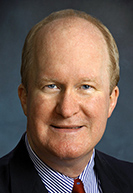Subscriber Benefit
As a subscriber you can listen to articles at work, in the car, or while you work out. Subscribe NowThe work of law enforcement has changed in the last 30 years. Technology has updated jail practices, drug addictions have increased and mental illness issues have become more acute.
But in Indiana, one aspect of local law enforcement has not changed in three decades: the per diem local jails receive to house, feed and transport inmates. Currently the state allocates a $35 per day, but the Indiana Sheriffs’ Association has announced plans to advocate for raising that amount to $55.
Hendricks County Sheriff Brett Clark, who serves as ISA secretary, told the Interim Study Committee on Corrections and Criminal Code late last month the association decided on the $20 increase after a series of roundtables with state, local and national stakeholders at seven locations across the state. The unchanging per diem was one of the most prevalent issues that was brought up during those discussions, Clark said.
That concern stems from the fact that jail costs have continued to rise, even as the per diem has remained the same. Each inmate must be housed and fed, and those who stay in jail for an extended period of time must be transported to and from their court hearings, Clark said. Further, drug addictions and other mental illnesses have become more prevalent, necessitating more jail staff to monitor mentally ill inmates.
Each of these changes is compounded by the fact that jail overcrowding has become a significant issue across the Hoosier state, particularly as it relates to Level 6 felons. While increasing the inmate per diem reimbursement won’t necessarily ease jail overcrowding, Clark told committee members the additional funds will help sheriffs hire additional staff and secure additional resources to ensure each inmate receives the appropriate services while incarcerated.
“For us that is a big issue and we think ($55) is a good medium number that nationally would stand up to scrutiny and really help the sheriffs and the county commissioners and the judges and everybody taking care of this business that we really don’t have the ability to turn away,” Clark said. “We’re the innkeepers, we can’t put up a no vacancy sign at the jail.”
Rep. Thomas Washburne, who chairs the study committee, surmised one way in which an increased per diem, if legislatively approved, could help ease jail overcrowding. As it stands now, some sheriffs will not house inmates from other counties, Washburne said, a fact Steuben County Sheriff Tim Troyer attributed to limited bed space and personnel.
“To accept 20 more inmates from him (Clark) when I’m understaffed would be a disaster for my county,” Troyer, president of the ISA, told legislators.
But if the per diem were increased, Washburne theorized some sheriffs may become more willing to take inmates from other counties where overcrowding is a bigger issue, because they would be able to pay for staff to monitor the inmates.
Public defense perspective
While Indiana’s sheriffs plan to lobby the statehouse to increase their per diem as a way of reducing jail overcrowding, another state group is using the issue of overcrowding as an incentive to improve Indiana’s public defense system.
In its final report released in late August, the Indiana Task Force on Public Defense listed several recommendations on ways to enhance the indigent criminal defense in Indiana and also include a list of reasons why improving public defense can benefit the entire state. Among those reasons was a reduction in jail overcrowding and recidivism.
“A well-trained and well-funded public defense delivery system is critical in assuring persons convicted of crimes receive the appropriate sentence, which often includes treatment or monitoring, not incarceration,” the report reads.
“… Most would agree the ultimate test of the effectiveness of the criminal justice system is its ability to reform an individual into a productive and self-sufficient member of society,” it continues. “Criminal defense attorneys, both private and public, are the actors in the criminal justice system who seek reformation opportunities to serve the needs of their clients and contribute to the goals of lowering recidivism.”
 Rutherford
RutherfordMark Rutherford, an attorney who leads the Indiana Public Defender Commission, said he’s seen how a strong public defense system can benefit jails in counties that adhere to the commission’s public defender caseload standards. Those counties are likelier to be equipped with public defenders who have the time to get to know their clients, then use that knowledge to convince a judge and a prosecutor to keep a client out of jail.
Instead, Rutherford said those public defenders learn more about their clients’ needs, such as the need for addiction rehabilitation, and can convey those needs to the court. When that kind of system is in place, Rutherford said, jail overcrowding is less acute.
“What I observe anecdotally when I look at the counties in our program is that there are big benefits,” he said. “The stays in jail are not as long and the number of repeat offenders goes down in counties that are part of the commission program.”
The challenge, then, is equipping all counties with the resources necessary to provide quality indigent defense services. Thus, in the same way the Sheriffs’ Association will be asking the Legislature for an increased per diem, the commission is preparing legislative goals based on the task force report that are designed to help counties stay in compliance with commission standards and improve the quality of indigent defense.•
Please enable JavaScript to view this content.
